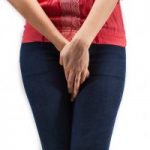 November is Bladder Health Awareness Month, so we have put together our top articles discussing various bladder issues, including urinary incontinence, overactive bladder, dementia, and lower urinary tract symptoms.
November is Bladder Health Awareness Month, so we have put together our top articles discussing various bladder issues, including urinary incontinence, overactive bladder, dementia, and lower urinary tract symptoms.
Bladder health problems are on the rise and become quite common with age. As populations continue to grow old, we hear more and more about bladder leaks and prostate issues. The following articles will educate you on the variety of bladder health conditions along with remedies you can utilize in order to take back control of your bladder.
Urinary incontinence may be managed with prompted voiding in nursing homes for elderly
Advertisement
Urinary incontinence may be managed with prompted voiding in nursing homes for elderly. In Hong Kong, 10 to 15 percent of those over the age of 65 suffer from urinary incontinence and rates among those residing in nursing homes have increased dramatically.
Urinary incontinence is commonly addressed with the use of adult diapers, but this can negatively impact a person’s self-esteem and increase the risk of skin irritation and urinary tract infections.
Behavioral strategies have also been found to be effective at treating urinary incontinence, such as time voiding, bladder training, and prompted voiding. Continue reading…
Overactive bladder diet: Foods and drinks to manage bladder health
 As studies have shown, those who suffer from overactive bladder (OAB) can manage their bladder health with diet adjustments. While it does take a little planning, it can bring many OAB sufferers a lot of relief.
As studies have shown, those who suffer from overactive bladder (OAB) can manage their bladder health with diet adjustments. While it does take a little planning, it can bring many OAB sufferers a lot of relief.
Overactive bladder is best described as a bladder problem that leads to the sudden urge to urinate or the need to urinate frequently throughout the day and night.
While volume of fluid intake can have an impact on this condition, there seems to be a lot of personal testimony suggesting the type of fluid and the kind of foods that are consumed play a very big role in the symptom flare-ups. Continue reading…
Lower urinary tract symptoms in men: Causes, symptoms, and treatment
 Although lower urinary tract symptoms are common in women, they can affect men, too.
Although lower urinary tract symptoms are common in women, they can affect men, too.
The term lower urinary tract symptoms (LUTS) refers to storage, voiding, and post-void dribbling.
Not only do LUTS affect a man’s quality of life, but they can also signal a more serious health concern.
Being able to spot these symptoms can help reduce the risk of any lower urinary tract complications. Continue reading…
Fecal incontinence or urinary incontinence diagnosis more likely in dementia patients: Study
 Fecal incontinence or urinary incontinence diagnosis is more likely in dementia patients. The researchers analyzed data from The Health Improvement Network (THIN) database and extracted records for 54,816 people over the age of 60 who were diagnosed with dementia along with records for 205,795 patients without dementia.
Fecal incontinence or urinary incontinence diagnosis is more likely in dementia patients. The researchers analyzed data from The Health Improvement Network (THIN) database and extracted records for 54,816 people over the age of 60 who were diagnosed with dementia along with records for 205,795 patients without dementia.
Men with dementia had had an annual rate of diagnosis of urinary incontinence of 42.3 per 1,000, compared with 19.8 per 1,000 in patients without dementia. Rates of urinary incontinence among women with dementia were 33.5 per 1,000 and 18.6 per 1,000 for women without dementia. Fecal incontinence rate among men with dementia was 11.1 per 1,000, and 3.1 per 1,000 without dementia. For women, it was 10.1 per 1,000 with dementia and 3.6 per 1,000 without the mental disorder. Continue reading…
Bladder training for urinary incontinence and urge incontinence
Advertisement
 Bladder training may be a beneficial treatment for urinary incontinence and urge incontinence.
Bladder training may be a beneficial treatment for urinary incontinence and urge incontinence.
Urinary incontinence is when urine leaks occur, and urge incontinence is a form of urine leakage resulting from a strong urge to urinate.
Bladder training is a type of behavioral therapy for retraining the bladder in order to prevent leaks. The goal of bladder training is to help patients control and hold in urine for longer periods of time to prevent emergency leaks and to get to a bathroom without an accident. Continue reading…
